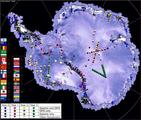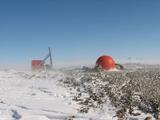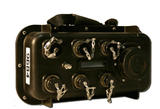This checklist is a list of items to consider while preparing for a new field project. It is aimed at providing a list of things to think about while making preparations for and assessments of possible seismic sites. This checklist is also appropriate for the initial installations and for the removal of the equipment at the end of the project. These guidelines are fairly general but focused for polar regions. It applies more to the Arctic and Sub-arctic regions rather than Antarctica, because for Antarctic projects, a lot of these issues are dealt with by the US Antarctic Program.
Site Assessment:
Climatic conditions:Wind, snow, temperature, altitude, ...
Access:
On foot: conditions (all year, seasonal), roughness of terrain, safety, man power, ...
By wheeled/tracked vehicle: conditions (all year, seasonal), roughness of terrain, ...
By fixed wings aircraft: airstrip conditions (all year, seasonal), typical weather conditions,cost, availability, safety, permitting, ...
By helicopter: landing zone conditions, typical weather conditions, cost, availability, safety, permitting, ...
By boat:land base vs. ship base, ease of access to land, protection from storms, issues of accidental introductions of rats and other non-native species to protected islands, cost, availability, safety, ...
Permitting (Public land, private land, restricted land, fees, monitored access, limited access to certain dates, etc).
Type of ground: Rock, mud, snow, ice, vegetation, sand, gravel, etc.
Hazards to the equipment:
Wildlife: Bears (very destructive!), rodents, foxes, cows, etc.
Humans: Theft, vandalism, etc.
Hazards to crew personnel:
Climatic conditions.
Access (steepness of terrain, crevasses, isolation, volcanic area, etc).
Wildlife (Bears, moose, etc).
Humans (locals with guns, etc).
Site Installation:
Dates:
Choice of dates to simplify logistics and installation.
Take into account climatic conditions.
Personnel, transport and equipment availability.
Maximize data return.
Minimize cost.
Permitting:
For land use.
For access.
For use of vehicle or aircrafts
Transport:
Personnel:customs issues, ...
Equipment:customs issues, potential HazMat, ...
Housing:
Food:
Contingencies:Things rarely all go as planned.
Site Removal and Equipment Regrograde:
Permitting:land reclamation requirements.
Transport:Methods, customs issues, potential HazMat, scheduling.
Returning equipment to PASSCAL Instrument Center:






